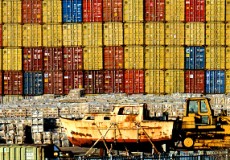- InformationHere you can find the documents for debate allowing us to advance on the reflections and issues of Rio+20. They can be concept papel, analysis, notes and reports.
Events December 2025 Mon Tue Wed Thu Fri Sat Sun 1 2 3 4 5 6 7 8 9 10 11 12 13 14 15 16 17 18 19 20 21 22 23 24 25 26 27 28 29 30 31 All events - Main Themes
- Ethical and philosophical fundamentals: subjectivity, domination, and emancipation
- Human rights, peoples, territories, and defense of Mother Earth
- Political subjects, the architecture of power, and democracy
- Production, distribution and consumption, access to wealth, common goods, and economies in transition
 November 22 2011
Development without Carbon: Climate and the Global Economy through the 21st Century
November 22 2011
Development without Carbon: Climate and the Global Economy through the 21st Century
Also available in Español
Executive summary
Economic development and the eradication of energy poverty are increasingly seen as key components in a comprehensive strategy to prevent dangerous climate change, along with greenhouse gas emission reductions and adaptation measures. But the current crop of climate economics models used to guide policymakers assumes very little economic growth in the poorest countries.
This report examines the implications of the no-development assumption that underlies many climate policy targets, and finds that, taking developing countries’ right to future emissions as a given, economic development in the poorest countries requires more stringent mitigation actions by their richer neighbors, both to reduce industrialized countries’ emissions and to provide funding for emissions reduction measures in the developing world. Projections of slow economic growth in the developing world, in contrast, would tend to create the expectation that the poorest countries will use up a relatively small share of the global 21st century emissions budget, leaving more “emissions space” for the high- and middle-income countries. Assuming that economic development will fail or falter has the effect of weakening the urgent call for rich countries to reduce their emissions.
It is hard to imagine a resolution to international climate negotiations that does not involve sustainable low-or-no-carbon development – here referred to, for simplicity, as “development without carbon.” For countries that, to date, have emitted very little, a choice between current economic development and avoiding future climate damage is an impossible dilemma. This report reviews the literature regarding the connection between energy, poverty, and emissions mitigation; sets out principles for an equitable climate policy; explores three future economic growth and emissions scenarios; presents a case study showing the impact of these three scenarios on Latin America and the Caribbean; and concludes with recommendations for setting climate policy targets.
What is fair?
Much has been written about the equitable allocation of future emissions, but there can be no single, definitive answer to what is right or fair in climate policy.In the emissions projections presented here, climate equity is approached in this way: The poorest countries have the same right to future emissions that richer countries asserted over past emissions. The historical and present-day big emitters have a special responsibility to assure that emissions levels are consistent with avoiding dangerous climate change. This responsibility extends both to lowering their own emissions, and to paying for emissions reductions in poorer countries.
An emissions budget
Goals for greenhouse gas emission reduction are set in relation to expected future emissions in the absence of climate policy, often called business-as-usual emissions. The smaller we think that future emissions will be without climate policy, the smaller our policy actions need to be to counteract those emissions – wishful thinking leads to poor planning. The pace of economic growth in the developing world is a critical, but little discussed, element in determining the overall scale of “21st century cumulative emissions,” a (slightly misnamed) measure which adds together all of the annual emissions from 2005 to 2105. The higher the business-as-usual cumulative emissions, the more ambitious climate policy must be to provide a good chance of avoiding dangerous climate change.
The budget for maintaining a 98-percent chance of keeping temperature increases below 2°C (a much discussed policy objective) is approximately 2,700 gigatons (Gt) carbon dioxide-equivalents (CO2-e) – including both carbon dioxide and other greenhouse gases – of which an estimated 200 Gt have already been emitted. Given this budget, country-level emissions can be viewed as a “zero-sum game”: the more that any one country emits, the smaller the emission budget that remains for other countries. If the poorest economies don’t grow very much, they won’t use up much of the remaining budget – leaving a relatively large emissions budget for the rest of the world.
Three scenarios of future emissions
This report sketches out a framework for incorporating real economic development in future climate-economics analysis by exploring the potential greenhouse gas emissions, and corresponding mitigation obligations, of three stylized futures for developing countries:
- Without Development: a business-as-usual (no policy) scenario with the standard economic growth rates found in climate-economics models;
- Development with Carbon: a business-as-usual (no policy) scenario with more rapid economic growth rates;
- Development without Carbon: a policy scenario with rapid economic growth and significant public measures to reduce emissions.
For ease of analysis, the 174 countries modeled for this report are divided into four income groups: high-income, high-middle-income, low-middle-income, and low-income.